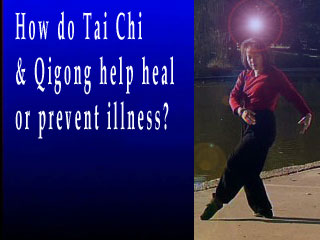 |
Don't Tear the Rice Paper!
In the TV series Kung Fu, you may have seen Kwai Chang Cane walk across the rice paper for his graduation ceremony at the Shao Lin Temple. This looked very mystical, but it was actually a very practical test.
The purpose of the test was to discover if he was pivoting the foot that was carrying his weight. In most Tai Chi, you do not pivot the weight-bearing foot because this can destabilize your balance. More important, doing this can also cause knee damage. Styles that do pivot on weight-bearing legs do so rarely and take certain precautions to prevent injury. These pivots are not recommended for arthritis sufferers.
Tai Chi movement is a process of "filling" and "emptying" each leg of Qi, or weight. The position of the dan tien over a leg determines that it is full, and the other leg is empty. You "fill" the opposite foot by shifting your dan tien over that opposite foot. Then your "empty" foot has no weight on it and can be pivoted with zero damage to the knee. The DVD insert's Tai Chi Long Form Lesson 1 Excerpt provides a visual example of how only the emptied foot is pivoted. Chapter 15's illustrated figures shadowing illustrations also clearly explain this for all this Long Form's movements in that chapter.
The below video includes an image of a woman doing a Tai Chi form, with special "energy" effects added, to help you see how energy flows through the body as you breathe, and relax into, your Tai Chi forms. You'll notice the energy is brighter in the leg she is filling with weight, as she moves over that leg she is also filling it with energy or Qi.
The vertical axis of the head and heart dan tien points lines up over the lower dan tien. This axis moving over a leg is filling that leg with Qi, or weight. As you let your breath out and relax your body weight onto a leg, you sink your Qi into that leg.